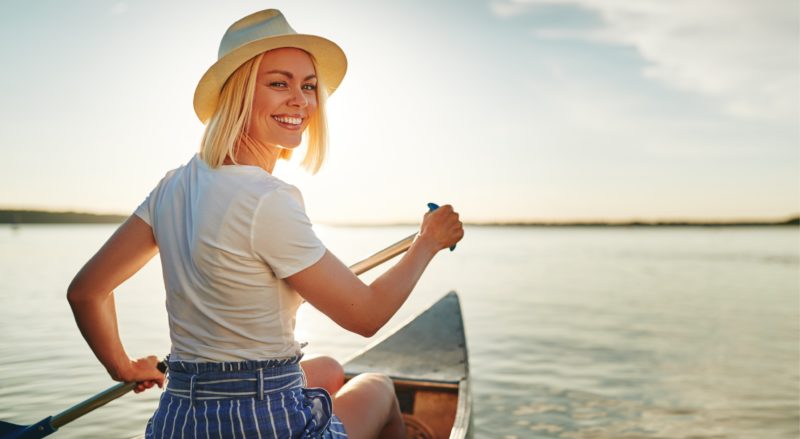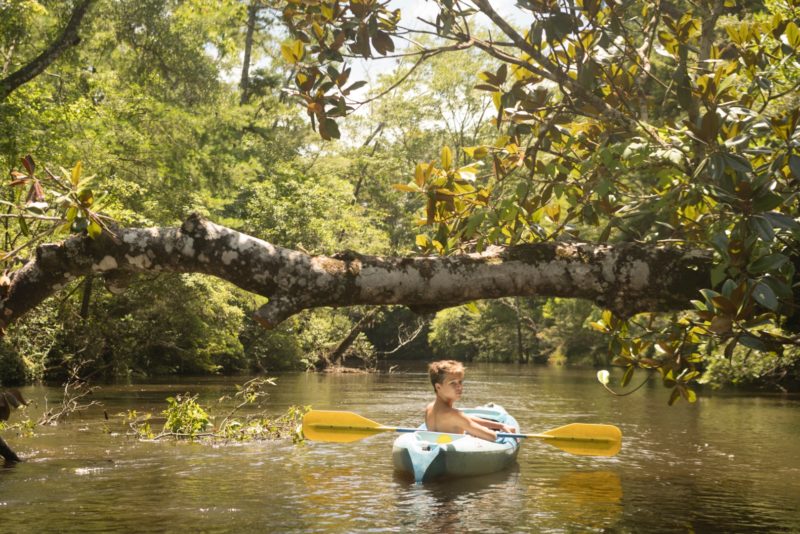Whether you’re new to river sports or a born river explorer, there is much to be said about proper paddle grips. While gripping a river paddle may seem instinctive, improperly grasping a paddle with both hands holding onto the shaft is a primary reason for injuries sustained in the boat. Although, keep in mind that most rivers in Missouri are easy enough to float down without an expert river guide.
So if you’re paddling down the easy flow of the Elk River outside Noel, Missouri, or maneuvering the class I or II rapids in the Big Sugar Creek near Pineville, Missouri, paddle grip is an essential piece of knowledge that serves you and your fellow floaters well.
Paddle Grips
Regarding paddle grip, keeping hold of a paddle while rafting, canoeing, or kayaking a river ranked as a class I rapid or above is essential. However, it may not be as crucial while floating down Elk River because it’s rated lower than a class I rapid, making it an ideal family-friendly float.
Therefore, knowing the two common paddle types can help you better prepare for when you must paddle. Whether you’re launching from the river edge or paddling to shore, there are different grip styles for both of these paddles:
- Single-blade Paddle
- Double-blade Paddle
Single-Blade Paddle
Canoes and rafts generally come outfitted with a single-blade paddle because there can be more than one paddler for these types of watercraft.

Single-blade paddles come with two different types of grips: asymmetrical and T-grip. The asymmetrical grip generally gets used in lake crafts, like canoes. However, most river vessels come with a T-grip design.
Both grip designs give a paddler the most significant leverage with the least resistance. Depending upon which side of the craft you are paddling on, you will always wrap your palm around the T-grip cross body.
For example, paddlers on a raft on the right side of the boat will grasp the T-grip with their left hand. While paddlers on the left side of the rivercraft hold the t-grip using their right hand.
In a canoe, it depends upon whether there is a solo paddler or a two-person paddle team. If there are two paddlers, the team must communicate well which side of the boat they should paddle on to direct the craft to shore or cross-river.
For solo paddlers with single blades, it’s a matter of swapping hand positions to ensure the cross-body hand is always holding the paddle grip, depending upon which side of the canoe the blade is on.
In other words, if the blade is in the water to the paddler’s left, the right-hand grasps the T-grip. If the paddle blade is in the water to the paddler’s right, the left hand will grab the top of the T-grip (as seen with the paddler above).
The other hand will always hold on to the shaft. For canoes, that will depend upon where you’re seated, in the bow (front) or the stern (rear). It will be the strongest paddler sitting at the stern who instructs the person seated at the bow. That’s because the person in the stern will steer the boat.
However, paddling in a river raft is different. First, it depends upon which side of the craft you sit on. If you’re seated on the port (left) side of the raft, your left hand will hold onto the shaft of the paddle, while those sitting on the starboard (right) side of the vessel grasp the paddle shaft with the right hand.
Double-Blade Paddle

On the other hand, kayakers use a double-blade paddle, which provides greater efficiency in traversing river currents and slightly improves a kayaker’s speed. For kayakers paddle lengths can range from approximately 79″ to 81″.
The blades are typically feathered and can rotate using a center ferrule, meaning the blades on a kayak paddle can rotate in opposing directions. That gives kayakers an advantage in wind conditions and the ability to paddle upstream.
The grip on a double-blade paddle is pretty straightforward: you wrap both hands around the shaft between the blades. Keeping your hands slightly wider than shoulder length apart and bent at 90 degrees at the elbow is the most comfortable position in a kayak.
Book A Stay Along Elk River in Missouri
Looking for an ideal location along the Elk River? Contact Lazy Days in Noel, MO, the premier rental site for river float trips. They offer prime Elk River RVing, tent campsites, and recently upgraded cabin rentals. So book your stay today at Lazy Days Resort and Campground!
Getting to Lazy Days Campground is a one-minute drive southwest of Interstate 49. Take exit 5 at mile marker 6. The resort location sits between the charming towns of Noel and Pineville, Missouri.

